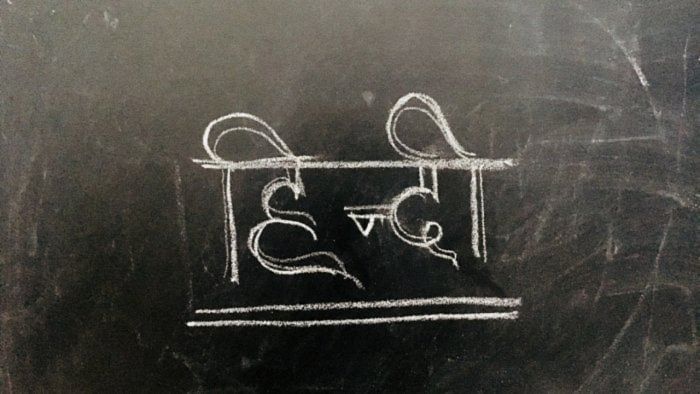
"Whether rightly or wrongly, the people of non-Hindi speaking areas have been made to feel that this fight, or this attitude on behalf of the Hindi-speaking areas, is a fight for effectively preventing the natural influence of other powerful languages of India on the composite culture of this nation."
– Smt. G. Durgabai Deshmukh
(Madras: General; Constituent Assembly Debates, September 14, 1949)
Seventy-three years later, not much seems to have changed. There are overt and covert attempts under the stewardship of the Modi government, perhaps stronger now than ever before, for Hindi to be elevated to what is claimed to be its rightful status as the national language of India. This current threatens to wash over the ties of tolerance and harmony that bind us together as a nation and consume us all in an endless whirlpool of bitterness. Language has always been explosive, and we know how it was one of the cardinal issues that led to the partition of Pakistan.
The Parliamentary Committee on Official Language, headed by none other than Union Home Minister Amit Shah himself, has recently submitted the 11th volume of its report to President Droupadi Murmu. Among other things, it recommends the use of Hindi as the medium of instruction in central universities and institutes of national importance - such as IITs, IIMs, and AIIMS - "in Hindi-speaking states".
As benevolent as this has been made to sound, it is when we look at the eclectic culture of these educational institutions, which invariably accept students from all over the country, that we come to realise the true intention behind this recommendation. Nevertheless, a facade is being created that the effort was to elevate all the Indian languages, but in reality, the aim is to confer prima donna status to Hindi.
It would do well for us to remember why the committee was formed in the first place. Section 4 of the Official Languages Act, 1963, stipulates its remit to "review the progress made in the use of Hindi for the official purposes of the Union and submit a report to the President making recommendations thereon".
What's curious here is that it's beyond the mandate of the committee to deliberate on the medium of teaching in educational institutions. In fact, it's against the spirit of the act itself to recommend the replacement of English as a medium of learning.
It is mandated in Section 3 of the Official Languages Act that the language protection provisions therein shall remain unabated until resolutions for the discontinuance of the use of the English language have been passed by legislatures of all states which have not adopted Hindi as their official language and further by each House of Parliament. However, the committee cleverly trod a path so as to add more legitimacy to the imposition of Hindi.
The website of the committee is already presented in Hindi. According to the MHA press release dated April 7, 2022, 70 per cent of the Union cabinet agenda is now prepared in Hindi. Parliament discourses have an overdose or are slanted heavily in favour of Hindi, with even those ministers hailing from the South and North East making it a point to speak in Hindi to appease the catchment area of the ruling party.
The South has always been concerned about the imposition of Hindi on their way of life, particularly affecting their prospects for central exams and jobs such as the Civil Services. Imagine if Sundar Pichai had been forced to write his exams in Hindi- Pichai earned his degree from IIT Kharagpur- would he ever have reached the top position at Google that we Indians are so proud of? Education has often been at the centre of the tug-of-war over language, signifying the fulcrum which could just as easily turn into a breaking point.
Though it started with the Kothari Commission report in 1966, the draft National Education Policy of 2020 stoked the fire when it proposed compulsory elementary learning in Hindi while underlining the contentious three-language formula.
After drawing much ire, the former was substituted for "mother tongue"; however, the argument still stands – while states in the South are expected to offer Hindi as the third language, states in the north have rarely displayed the will or the infrastructure to offer any option besides Sanskrit. Interestingly, Kerala has started Hindi schools to cater to the wards of lakhs of guest workers from North India.
The 2011 Census paints quite a picture for us. Of the 121 recorded languages, Hindi turned out to be the only scheduled language that registered a considerable increase in the number of speakers, to the tune of 6 per cent. Hindi recorded stupendous growth in the number of speakers in five decades—from making up 30.39 per cent (13.34 crore) of India's population in 1961 to 43.63 per cent (52.83 crore) in 2011.
But there is a catch in this that the policymakers tend to forget. The purported spike came at the cost of other languages bearing similarities with it. In 1961, only ten mother tongues were categorised as dialects under Hindi, but by 2011 this number rose to 56, even as native speakers strive to attain the status of separate scheduled languages. Ironically, even this deceptive figure doesn't make India a Hindi-majority country.
India is unique due to its rich and diverse culture. A language is a powerful tool on which a community is built. Fanaticism on the language front would do enormous damage to the cultural heritage of the nation, and it doesn't augur well for cooperative federalism.
(John Brittas is a journalist and Member of Parliament)
Disclaimer: The views expressed above are the author's own. They do not necessarily reflect the views of DH.